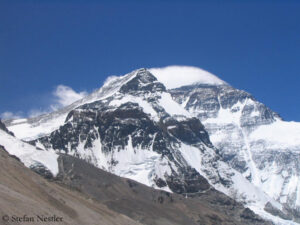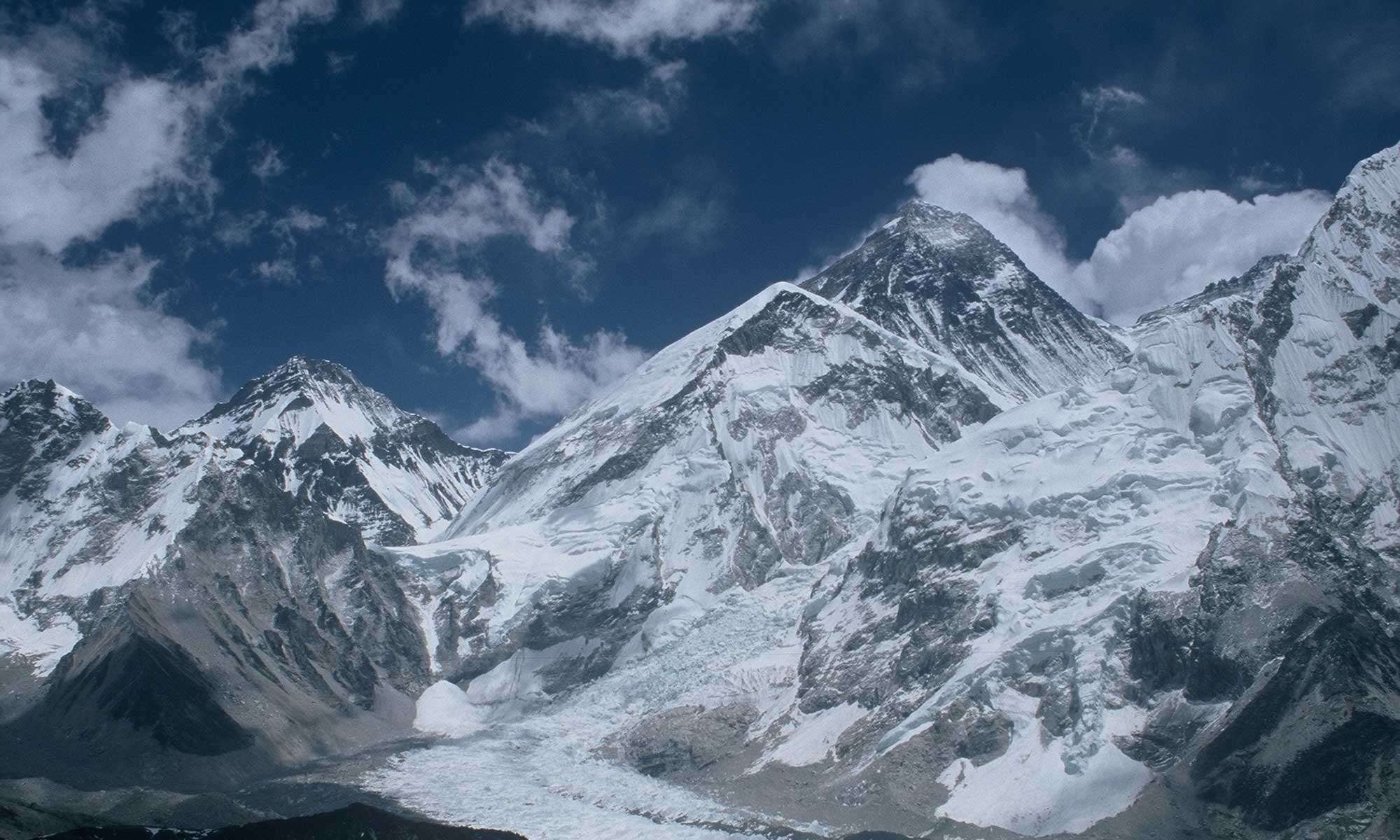
That was a hard piece of work. Yesterday, Thursday, the Icefall Doctors finally announced the completion of their work. The route from the base camp on the Nepalese south side of Mount Everest through the Khumbu Icefall up to Camp 2 at 6,400 meters has been secured with fixed ropes, the Sagarmatha Pollution Control Committee (SPCC) announced.
The eight Icefall Doctors – Ang Sarki Sherpa, Dawa Nuru Sherpa, Pemba Tshering Sherpa, Ngima Tenzi Sherpa, Ngawang Chhimi Sherpa, Dawa Chhiri Sherpa, Dawa Jangbu Sherpa and Mingma Gyaljen Sherpa – had needed ten working days more than originally planned, Tshering Sherpa, chief executive officer at SPCC, told the newspaper “The Himalayan Times”. They were “struggling hard”, he said. The team found a route through the ice labyrinth only on the third attempt.
The SPCC and its Icefall Doctors are responsible for securing the lower part of the ascent route. Above Camp 2, a team from a Nepalese expedition operator takes over the task of rope-fixing up to the summit at 8,849 meters on behalf of the Expedition Operators’ Association Nepal (EOA-Nepal). This year, Seven Summit Treks, the largest expedition operator in Nepal, is responsible for this.
Wide crevasses blocked the way

Another winter with very little snow had meant that the Icefall Doctors had failed on their first two route attempts through the Khumbu Icefall and had to start all over again. They had been stopped by very wide crevasses that could not be crossed with ladders.
According to reports, the route that has now been completed leads further to the left through the icefall when viewed from below. In previous years, the Icefall Doctors had avoided the vicinity of the West Shoulder. On 18 April 2014 – exactly ten years ago today – 16 Nepalese climbers lost their lives in an ice avalanche that broke loose there. Due to the accident, one of the worst in Everest’s history, the season was canceled at the time.
The Nepalese Ministry of Tourism has issued 274 climbing permits for this spring so far (as of 15 April). In comparison: at this time last year (16 April), 319 permits had been issued – resulting in 478 permits, more than ever before in one season.
Border to Tibet not yet open

Meanwhile, the comeback of foreign commercial expeditions on the Tibetan north side of Mount Everest is also proving difficult. It is said that the border to China will only be opened for the teams in the last week of April. The season on the north side also ends irrevocably at the end of May.
The operator Adventure Peaks pulled the ripcord and called its team back to Kathmandu. The British company announced that there was not enough time to acclimatize sufficiently for Everest. The team will now ascend from the Nepalese side. Other operators such as Furtenbach Adventures or Alpenglow Expeditions do not yet see their expeditions at risk because their members will travel to Tibet pre-acclimatized in hypoxia tents.
Foreign expeditions to China were banned from 2020 to 2022 due to the COVID-19 pandemic. In spring 2023, the Chinese-Tibetan authorities delayed issuing Everest permits for so long that the initially interested expedition operators abandoned their plans. They had run out of time.
